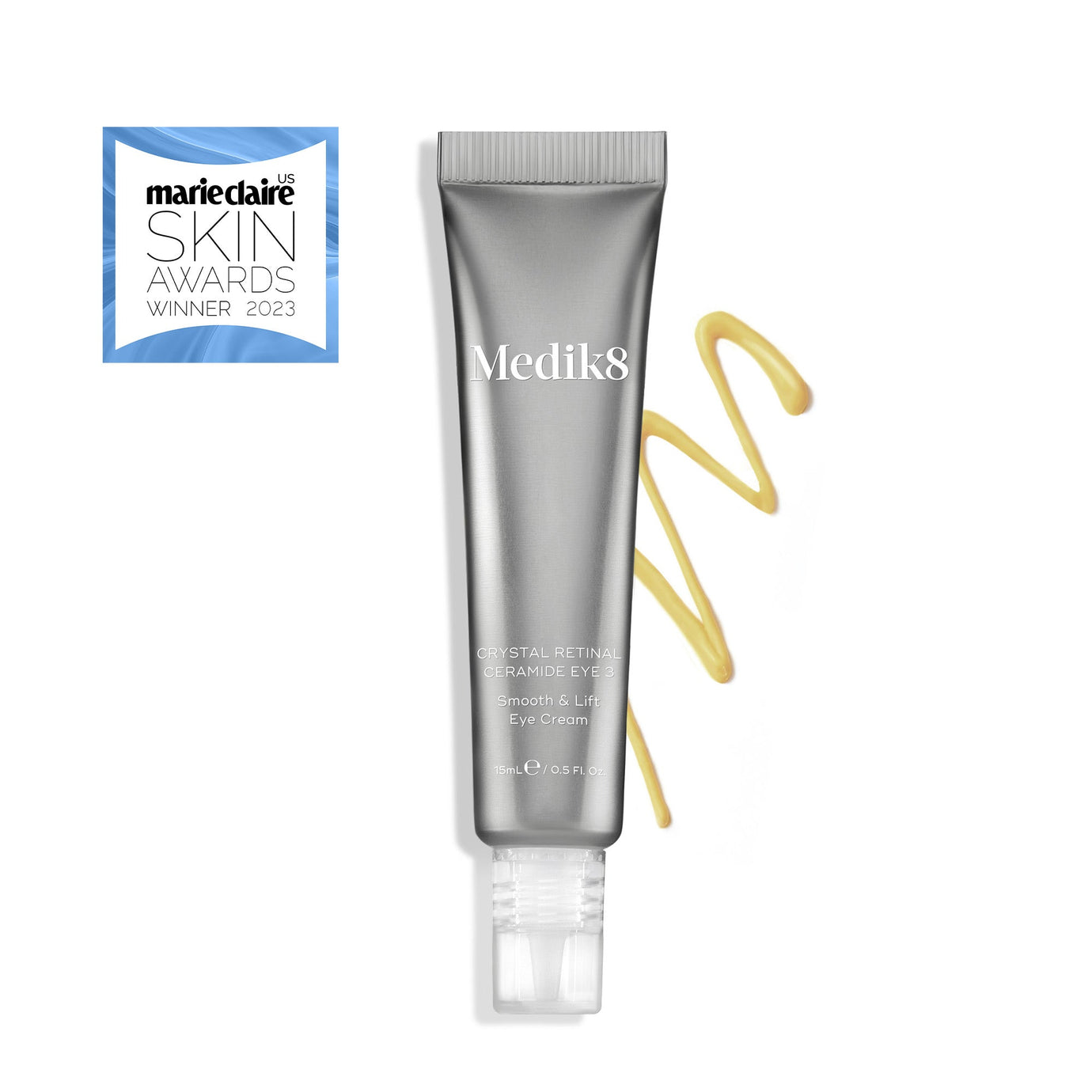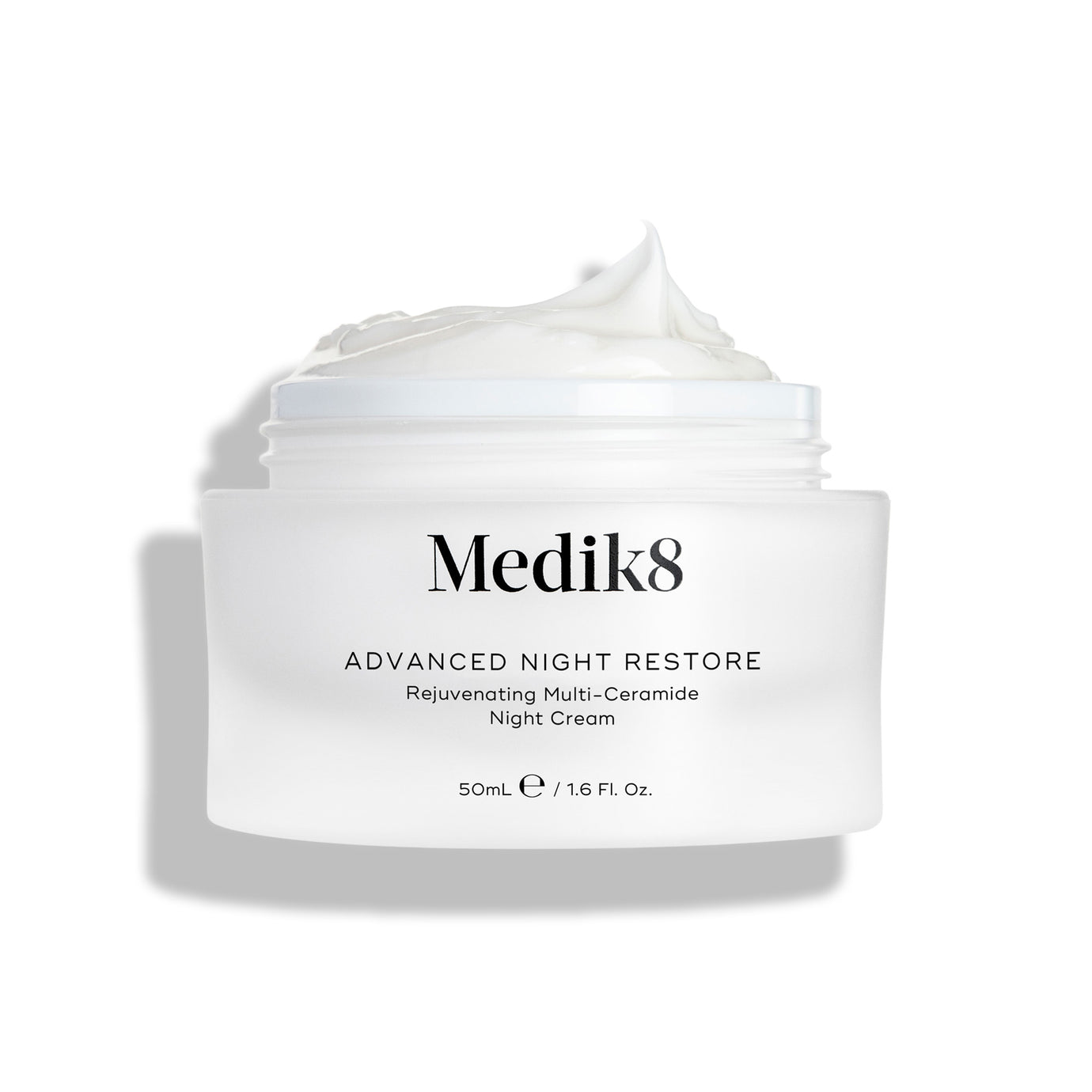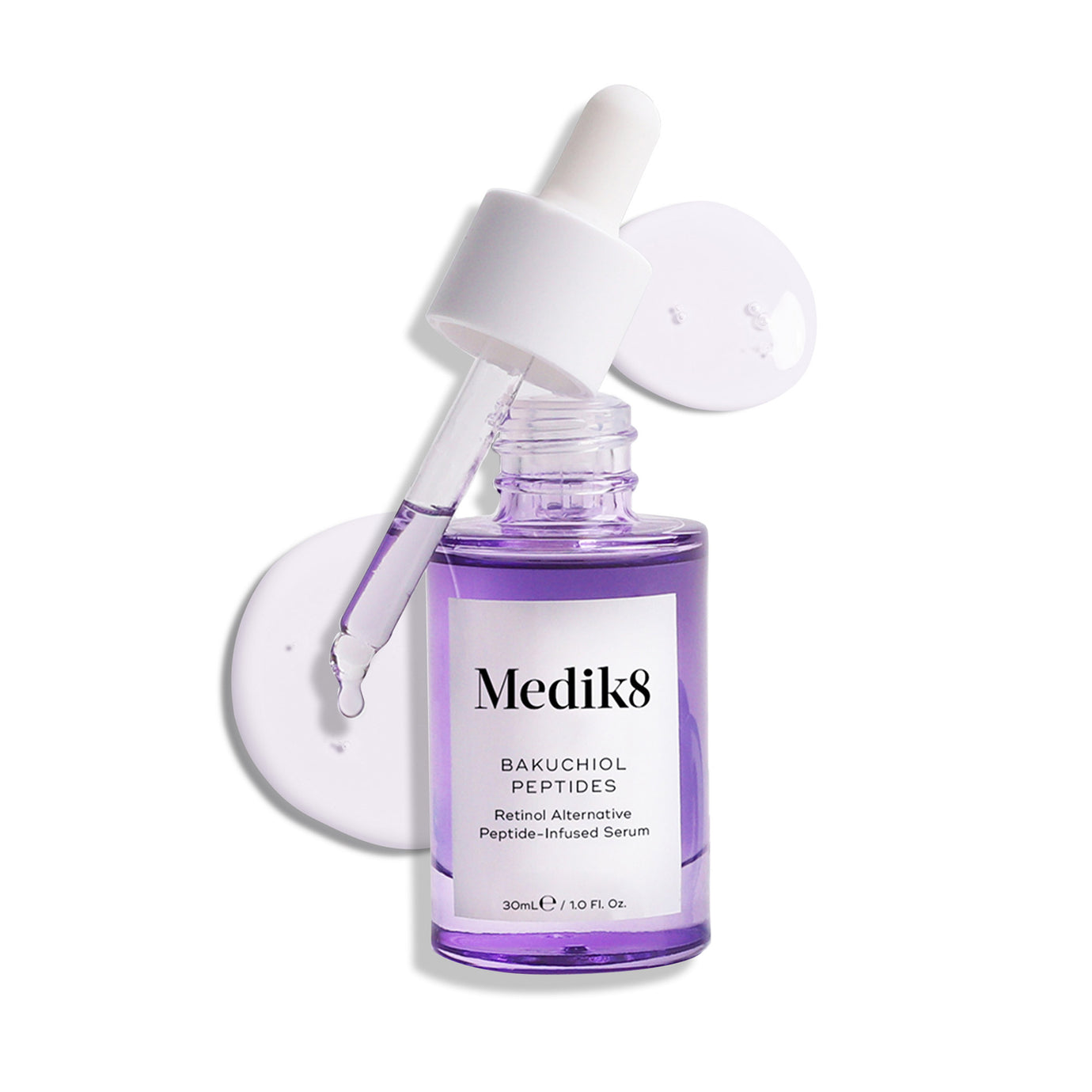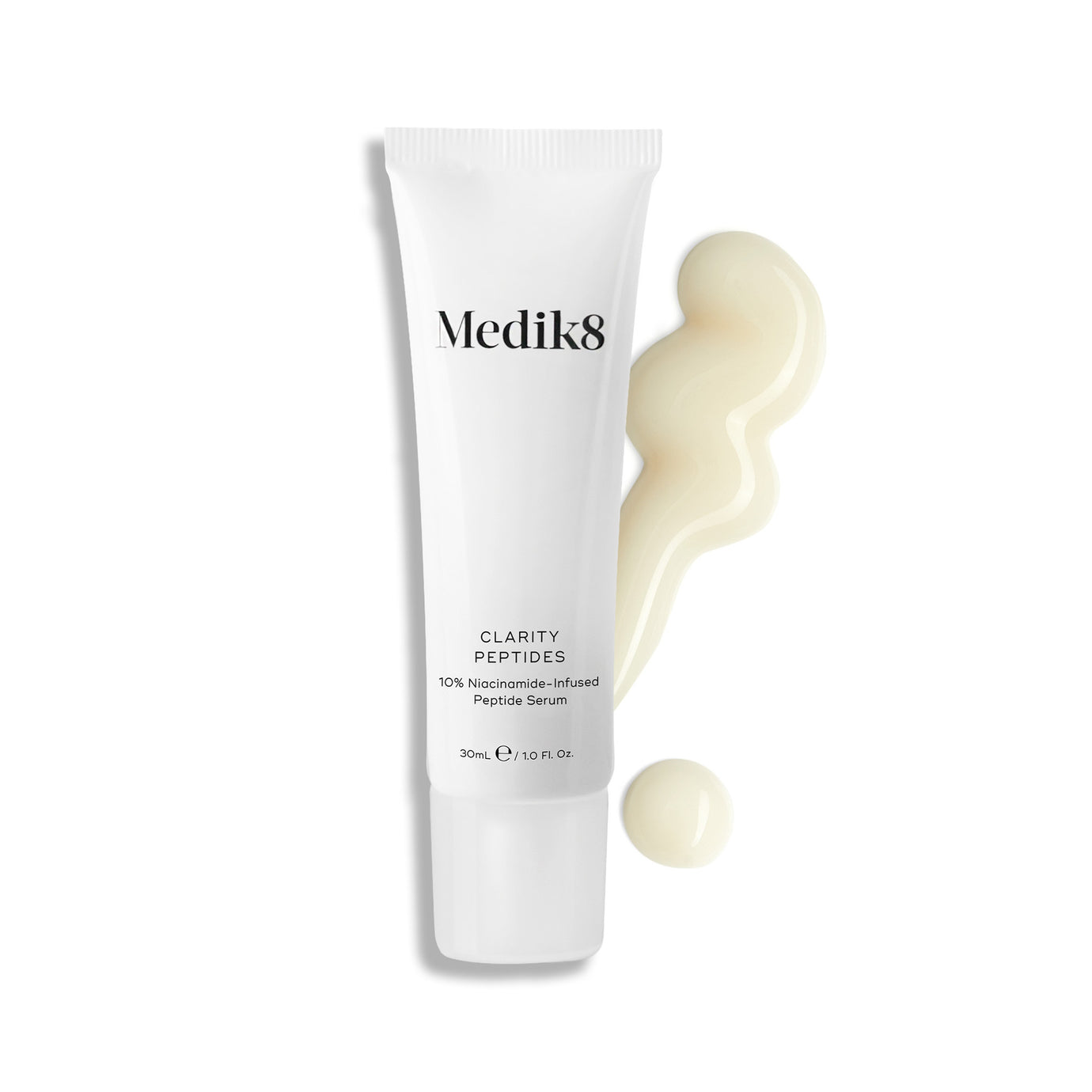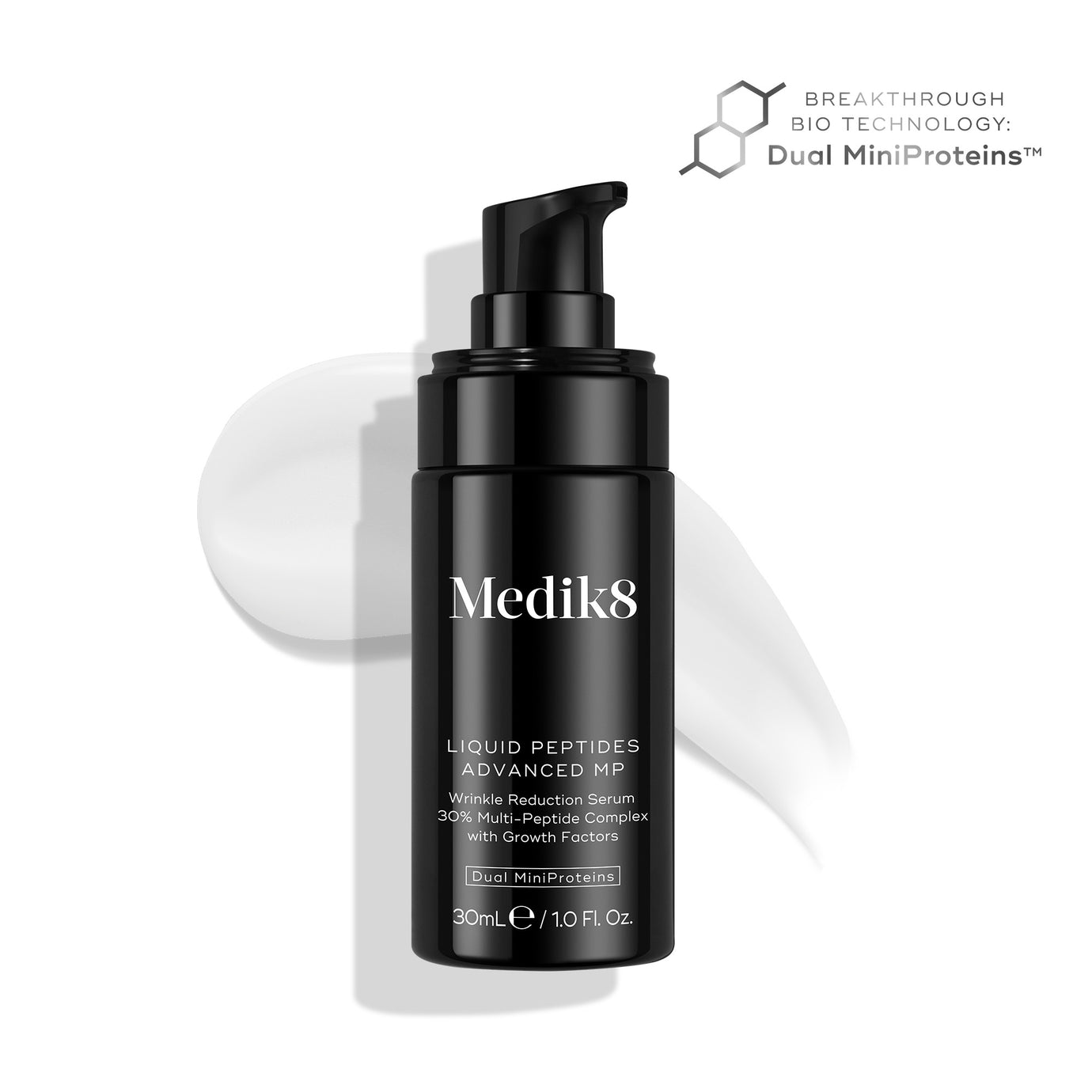Ceramides vs Peptides: How Do They Compare?
Written by: Lucy Partington
Updated on: 29th January 2025
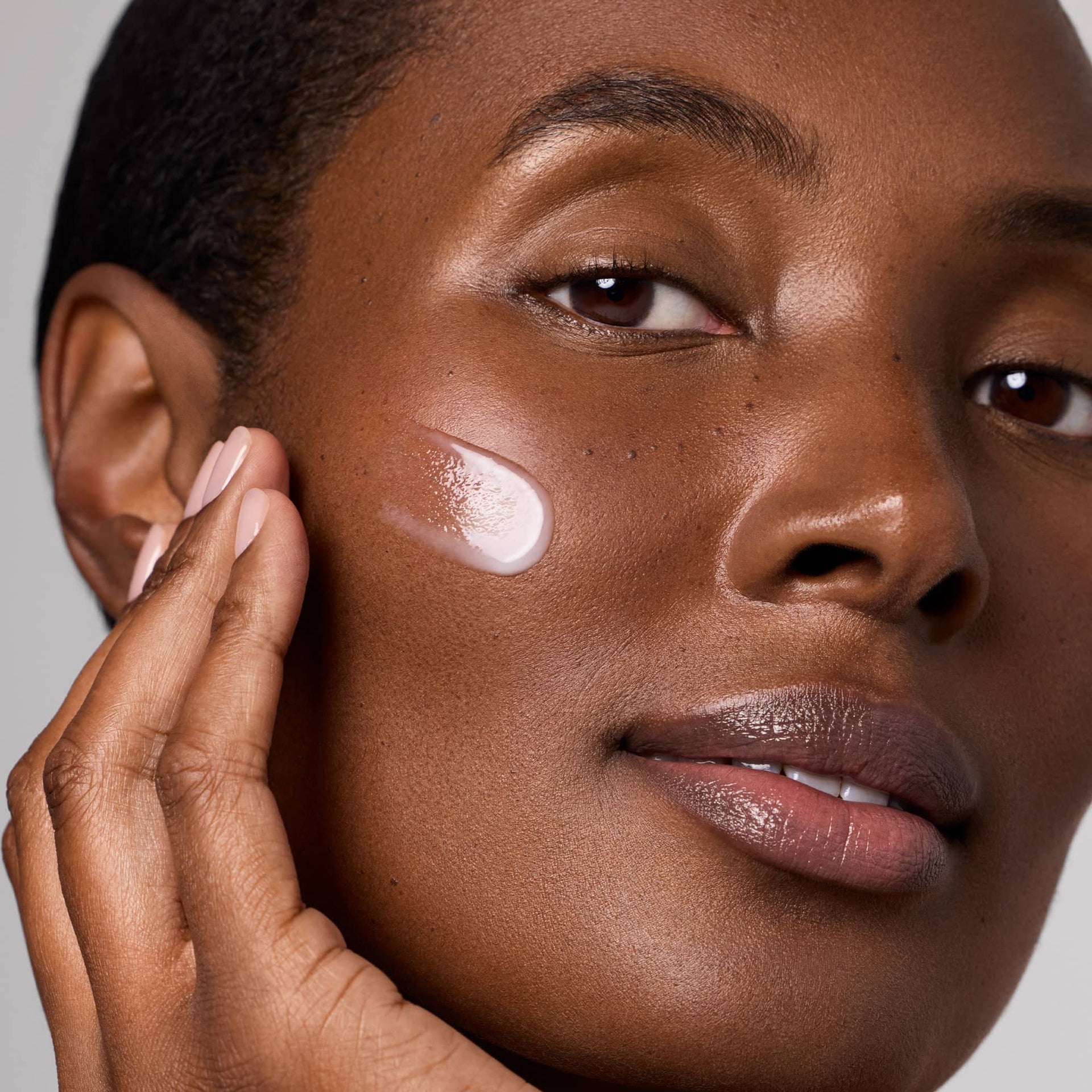
Two current buzzwords floating around the skincare space, and chances are you’ve heard at least one – if not both – of them: ceramides and peptides.
Both ingredients are powerhouses in their own right, and while they each have incredible benefits, they work differently on the skin. However, it’s worth noting that most people can benefit from incorporating them into their routine, whether separately or together. But what are the real differences between ceramides and peptides and how do they compare to one another?
Here, we’ve broken it down once and for all, we’ll let you know the benefits of using ceramides and peptides for skin, along with the products we recommend trying.
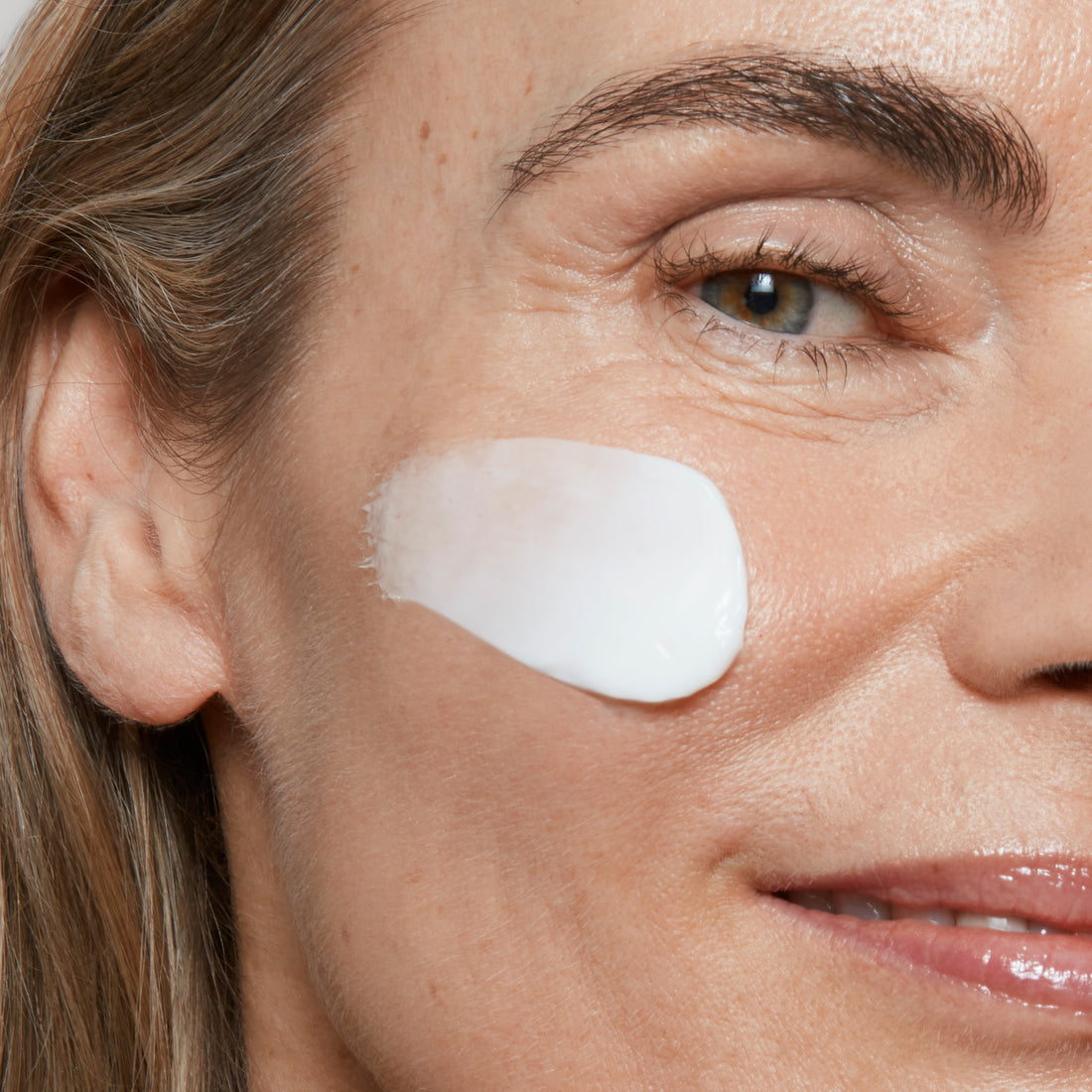
What are ceramides?
Ceramides are chemical compounds that come from a type of waxy lipid (a fat molecule) found naturally in the skin. They make up over 50% of the skin’s composition, so it’s probably no surprise to hear that they play a vital role in protecting skin against environmental threats while also maintaining the all-important skin barrier, helping it retain moisture. Put simply, ceramides are like the ‘glue’ that holds skin cells together, in turn helping to ensure it remains hydrated, smooth and protected from environmental damage and any irritants that we’re unknowingly exposed to daily.
How do they work?
There are a few different ways that ceramides work, with their main job being to ensure skin is smooth, hydrated and protected…
✓ Holding skin cells together:
ceramides act like glue to help ensure skin cells are all tightly packed together.
✓ Keeping skin moisturised:
ceramides form a barrier that locks in moisture and prevents dryness from occurring.
✓ Protecting the skin:
ceramides shield the skin from harmful elements in the atmosphere – like bacteria and pollutants – to prevent visible damage from occurring.
What are peptides?
Peptides can be defined as short chains of amino acids, which are the building blocks of protein. In skincare terms, peptides help signal to the skin to produce more collagen and elastin, both of which are essential when it comes to keeping the skin firm, smooth and youthful – which is what we all want, right?
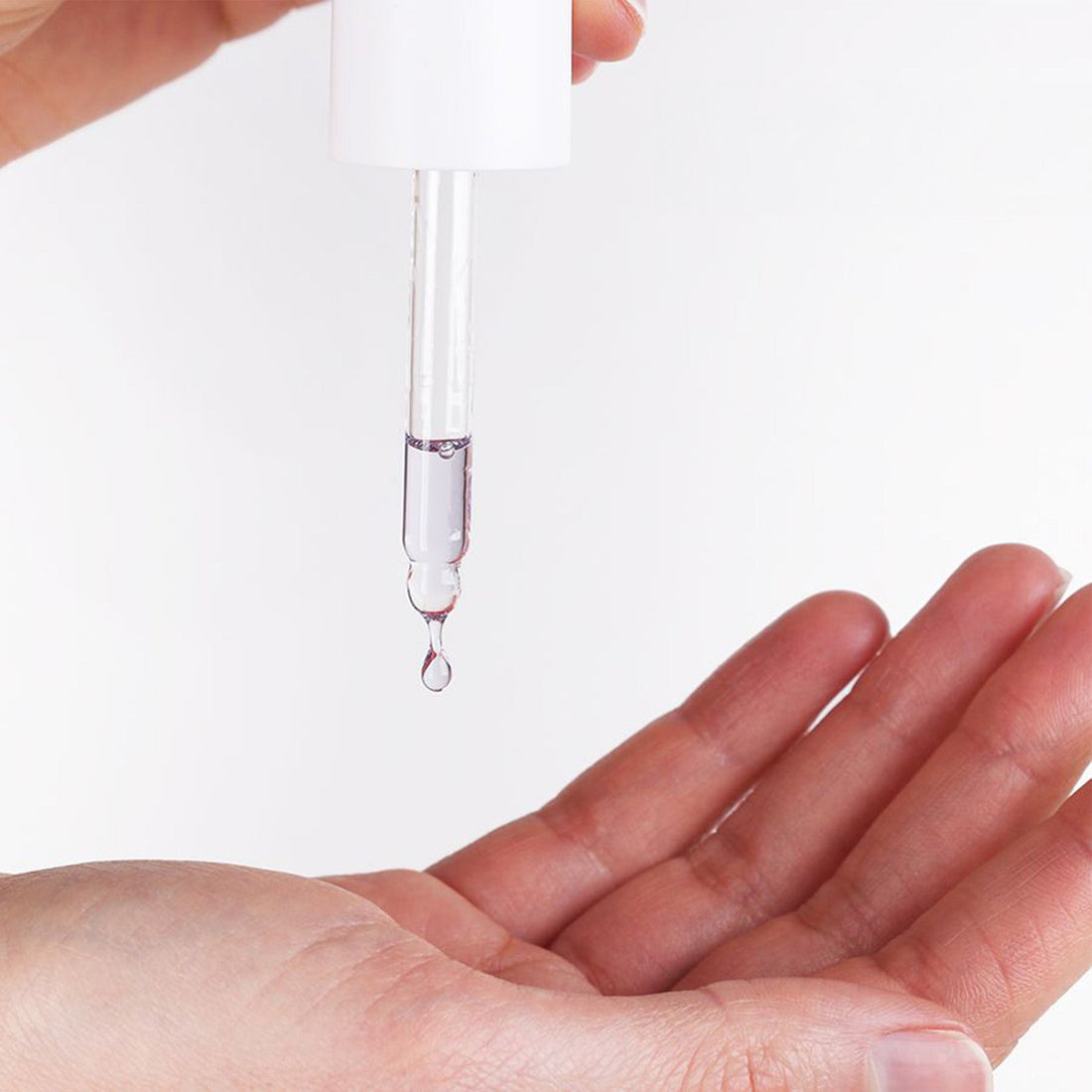
How do they work?
Peptides
are a powerful ingredient and work to benefit the skin in a few different ways:
✓ Boosting collagen production:
Peptides signal the skin to produce more collagen, which helps keep it firm and reduces wrinkles.
✓ Improves the skin barrier:
Peptides help to strengthen the skin’s protective barrier
✓ Enhance elasticity:
Peptides help increase the skin’s elasticity, in turn making it more resilient and bouncy.
✓ Reduce inflammation and promote healing:
Peptides can help calm and soothe irritated skin, as well as work to aid skin repair and regeneration to keep skin firm, smooth and healthy.
✓ Hydration boost:
Peptides act as moisture magnets, helping to retain essential moisture for a plumper and more hydrated complexion
Similarities and differences between ceramides and peptides
| Ceramides | Peptides | |
|---|---|---|
| Definition | Lipid molecules that form part of the skin’s barrier function | Short-chain amino acids that are the building blocks of proteins |
| Primary function | Strengthen the skin’s barrier and help retain moisture | Stimulate collagen and elastin production to help improve skin firmness |
| Benefits | - Lock in moisture and hydrate skin - Protection against environmental damage - Reduce dryness and irritation - Help repair skin - Reinforce the skin’s barrier |
- Boost collagen production - Improve elasticity - Reduce wrinkles and signs of ageing - Promote healing and skin regeneration - Leaves skin visibly smoother |
| How they work | Form a protective layer to lock in moisture | Signal to the skin to produce more collagen and elastin |
| Skin types | Every skin type can benefit from using ceramides without worrying they will cause side effects or irritation. Dry, dehydrated, and compromised skin types are likely to experience the most noticeable improvements. | Peptides are beneficial for all skin types but can offer specific advantages for those with dry, damaged acne-prone and ageing skin. |
What about using peptides and ceramides together?
Yes, you can combine both ceramides and peptides together in your routine. Each one has different priorities within skincare, so both ingredients can complement each other very well. The benefits of ceramides and peptides extend to dry skin, ageing concerns, and sensitive or compromised skin.
Ceramide and peptide benefits for the skin:
✓ Barrier repair + skin renewal:
Ceramides strengthen the skin barrier and lock in moisture, while peptides signal the skin to produce more collagen and elastin for repair and renewal.
✓ Enhanced hydration and firmness:
Ceramides prevent water loss, keeping the skin hydrated, while peptides improve skin elasticity and reduce fine lines.
✓ Balanced skin health:
Ceramides protect and soothe the skin, creating an ideal environment for peptides to work effectively in repairing and rejuvenating skin.
✓ Age-defying powerhouse:
Ceramides strengthen the skin barrier for lasting hydration, while peptides boost collagen to smooth fine lines and firm skin for a youthful glow.

How to use them together:
Layering: Apply a peptide serum first to allow the peptides to penetrate deeply and stimulate collagen production, followed by a ceramide-rich moisturiser to lock in hydration and strengthen the skin barrier.
Combination products: Some products already combine peptides and ceramides for convenience and maximum effectiveness.
Daily use: Both ingredients are gentle and can be used together morning and night without irritation.
An example of using the two ingredients in your skincare routine may look something like this:
To conclude, which one should you choose?
Just because you can use ceramides and peptides together doesn’t mean you have to. Using both can provide combined benefits, especially for their youth-renewing properties, but using them separately depending on what your skin’s unique needs and concerns are can also be beneficial.
As with all skincare routines, the key to success is consistency and using products best suited to your individual skin type.
Whether you opt for ceramides, peptides, or both, it really comes down to your specific skin concerns and goals.
If your main concern is dryness or you have a compromised skin barrier, ceramides are a great choice. Not only will they help lock in moisture, but they will also help soothe and repair skin, in turn calming any irritation or inflammation that you’re experiencing.
The ceramides to try:
However, if your main concern is addressing signs of ageing or you’re looking to improve your skin’s texture, peptides could be the one for you.
The peptides to try:
Frequently Asked Questions
Peptides directly help boost collagen production. They are short chain amino acids that work by signalling to the skin to produce more collagen and elastin to help improve firmness and elasticity.
If your skin is acne-prone and you’re suffering from dryness or a compromised barrier, ceramides will be beneficial. However, if your acne-prone skin is inflamed, peptides can support healing and improve texture.
While there aren’t any ingredients out of bounds when you use ceramides, it’s best to avoid strong acids which may cause irritation and compromise the skin barrier.
Ceramides are generally better for dry skin because they help to restore and maintain the skin barrier, working to lock in moisture which is important for ensuring dry skin remains hydrated and protected.
Not necessarily. While both can be used alone, combining them enhances benefits. Peptides repair skin from within by targeting collagen, while ceramides maintain a healthy barrier on the surface. Together, they effectively combat ageing and dehydration, leaving your skin healthy and balanced. Choose based on your skin type and specific concerns, or incorporate both for a comprehensive approach.
